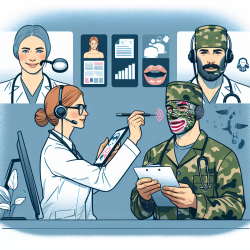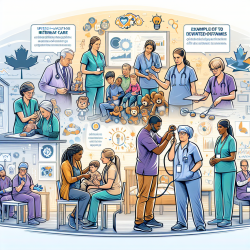As a speech-language pathologist dedicated to improving outcomes for children, embracing evidence-based practices is crucial. One such practice, peer learning, has shown remarkable benefits in clinical education. The study "Exploring nursing students’ experience of peer learning in clinical practice" (Ravanipour et al., 2015) offers valuable insights that can be adapted to enhance the skills of speech-language pathologists. This blog explores these findings and their application in our field.
Understanding Peer Learning
Peer learning involves students of similar age or experience levels engaging in mutual learning activities. It is a reciprocal process that encourages sharing knowledge, ideas, and experiences, benefiting both the learner and the peer teacher. This approach fosters a supportive and less stressful learning environment, which can be particularly advantageous in clinical settings.
Key Findings from the Study
The study by Ravanipour et al. (2015) identified four main themes from nursing students' experiences with peer learning:
- Paradoxical Dualism: Peer learning increases self-confidence and accuracy while reducing stress. However, it may also lead to dependency on peers.
- Peer Exploitation: The effectiveness of peer learning depends on the selection and training of peers.
- First Learning Efficacy: Peer learning is most effective when introduced early in the educational process.
- Socialization Practice: Peer learning enhances teamwork and social skills, helping students understand their strengths and weaknesses.
Applying Peer Learning in Speech-Language Pathology
Adapting these findings to speech-language pathology can significantly improve clinical practice and outcomes for children. Here’s how:
1. Foster a Supportive Learning Environment
Encourage a culture of peer learning within your practice or educational institution. Create opportunities for students and practitioners to collaborate, share knowledge, and support each other. This can be achieved through structured peer learning sessions, group projects, and mentorship programs.
2. Carefully Select and Train Peers
Identify individuals with strong communication skills, patience, and a solid understanding of clinical practices to act as peer teachers. Provide them with training on how to effectively support their peers, ensuring they can offer constructive feedback and guidance.
3. Introduce Peer Learning Early
Integrate peer learning into the early stages of education and training for speech-language pathologists. This helps build confidence and competence from the outset, preparing students for independent practice.
4. Promote Teamwork and Social Skills
Use peer learning to enhance socialization and teamwork skills. Encourage students to reflect on their experiences, identify areas for improvement, and learn from their peers. This collaborative approach can lead to more well-rounded practitioners who are better equipped to handle the complexities of clinical practice.
Conclusion
Implementing peer learning in speech-language pathology can lead to significant improvements in clinical skills and child outcomes. By fostering a supportive learning environment, carefully selecting and training peers, introducing peer learning early, and promoting teamwork, we can create a more effective and enriching educational experience.
To read the original research paper, please follow this link: Exploring nursing students’ experience of peer learning in clinical practice.










